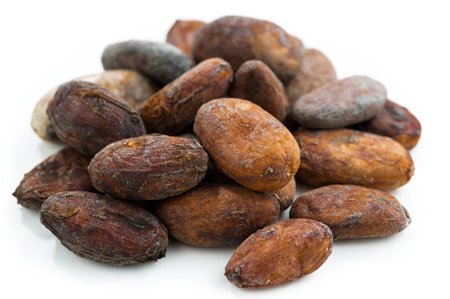How Long Can the Cocoa Glut Last?
Category: Cocoa
 (Agrimoney) – Cocoa prices plunged to eight-and- a-half year lows this week, on ideas of a substantial glut in the market, thanks to a huge crop in Cote D’Ivoire, the world’s top producer.
(Agrimoney) – Cocoa prices plunged to eight-and- a-half year lows this week, on ideas of a substantial glut in the market, thanks to a huge crop in Cote D’Ivoire, the world’s top producer.
But with much of the crop reported to be stuck in lorries, or rotting on the trees, and with farmer incomes squeezed by low prices and slow sales, how long can this market surplus last?
And if cocoa processors step in to buy and the current rock-bottom price, after depleting their butter and powder stocks during a low period of low grinding, will they find the volumes and the quality they expect?
Government programme backfires
Farmers in Cote D’Ivoire are struggling to find buyers for their beans, after a large number of local exporters reneged on contracts.
“What appears to be the root cause is that an attempt by the government to try to improve the position of small exporters has backfired very badly,” explains Edward George, head of commodity research at the pan-African bank Ecobank.
The Ivorian Coffee and Cocoa Council (CCC) this season increased the share of contracts they gave to small local exporters, allowing them to buy beans locally and sell them onto the international market.
“The CCC wanted to give the smaller exporters a bigger piece of the pie,” Mr George says.
Farmgate prices too high
But it turns out that many of these small producers neglected to lock in export prices back when the cocoa market was high.
And the government set a high farmgate price, the price buyers must sell farmers, of 1,100 Central African Francs per kilogramme.
At current exchange rates, this is around $1,787 a tonne for up-country beans.
This compares to an exchange price in New York which recently fell below $2,000 a tonne for front- month futures, meaning honouring these export contracts would have resulted in huge losses.
Huge defaults leave stocks to be resold
The result has been a mass-default by unhedged exporters, leaving huge volumes of beans needing to be resold
The question of just how many beans will now be resold is an open one, with some estimates as high as 350,000 tonnes.
And the prospect of bargain-basement cocoa beans coming from Cote D’Ivoire has helped push prices ever lower.
“For the big exporters, their view is ‘why should we buy any more beans?'” Mr George said. “That’s why the beans are piling up.”
Stressed infrastructure
But these excess stocks will not last forever, unless room can be found in the country’s glutted warehouses.
“Cocoa farmers in Ivory Coast are already refusing to sell their beans at the current low prices,” Commerzbank said.
And the condition of these beans is deteriorating rapidly.
“Beans are in trucks… beans are being held on farms,” Mr George said.
“Beans need to be aired, turned around… Because they’re being stuck in the value chain these beans are falling in quality.”
Threat to income
The CCC has an option to free up the supply chain, if it raises the farm-gate price before the start of the mid-crop, the second harvest which starts in April, and usually deliver smaller beans.
“Very often the CCC will offer a discount on mid-crop beans,” Mr George noted. “A lot of people hope that’s what they will do.”
“That will allow farmers to clear the backlog.”
But a cut to the farmgate price means a cut to farmer incomes, and that means less fertilizer application for the 2017-18 season.
“This could have a really devastating impact,” Mr George. “It’s a huge risk for next season.”
Investment could fall
Commerzbank also warned that “falling incomes will probably mean that less is invested in maintenance of the cocoa plantations, which would negatively impact future crops”.
Time is running out to get money to farmers before the application period, which usually takes place during the April to September mid-crop.
“It’s very difficult for farmers to have access to funds,” Mr George warns. “Very few people want to extend them credit.”
Could demand be about to rise?
The other big question is over the scale of cocoa consumption, which has been disappointing over the last year.
The numbers from confectioners are “a bit unclear,” Mr George said, but they mostly point to flat or slightly growing consumption.
But numbers from bean processors, which are treated as a proxy for demand, have been even weaker.
The cocoa grind, the volume of beans being turned into butter and powder, has been weak across most regions.
“All of that would suggest that they’ve been running down stocks [of butter and powder],” Mr George said.
“I would not be surprised if they have to increase grinding,” he said. “That should help rebalance the market.”
How long can the surplus last?
With the cocoa market forecast for a surplus of 150,000-200,000 tonnes this year, there is plenty for room for a shortfall of Ivorian production.
But prices are rock bottom, and hedge funds are heavily short in cocoa, leaving room for a rapid rally if those fundamentals shift, for this season or the next.
So grinders might not want to sit on their hands before locking in cocoa prices.

